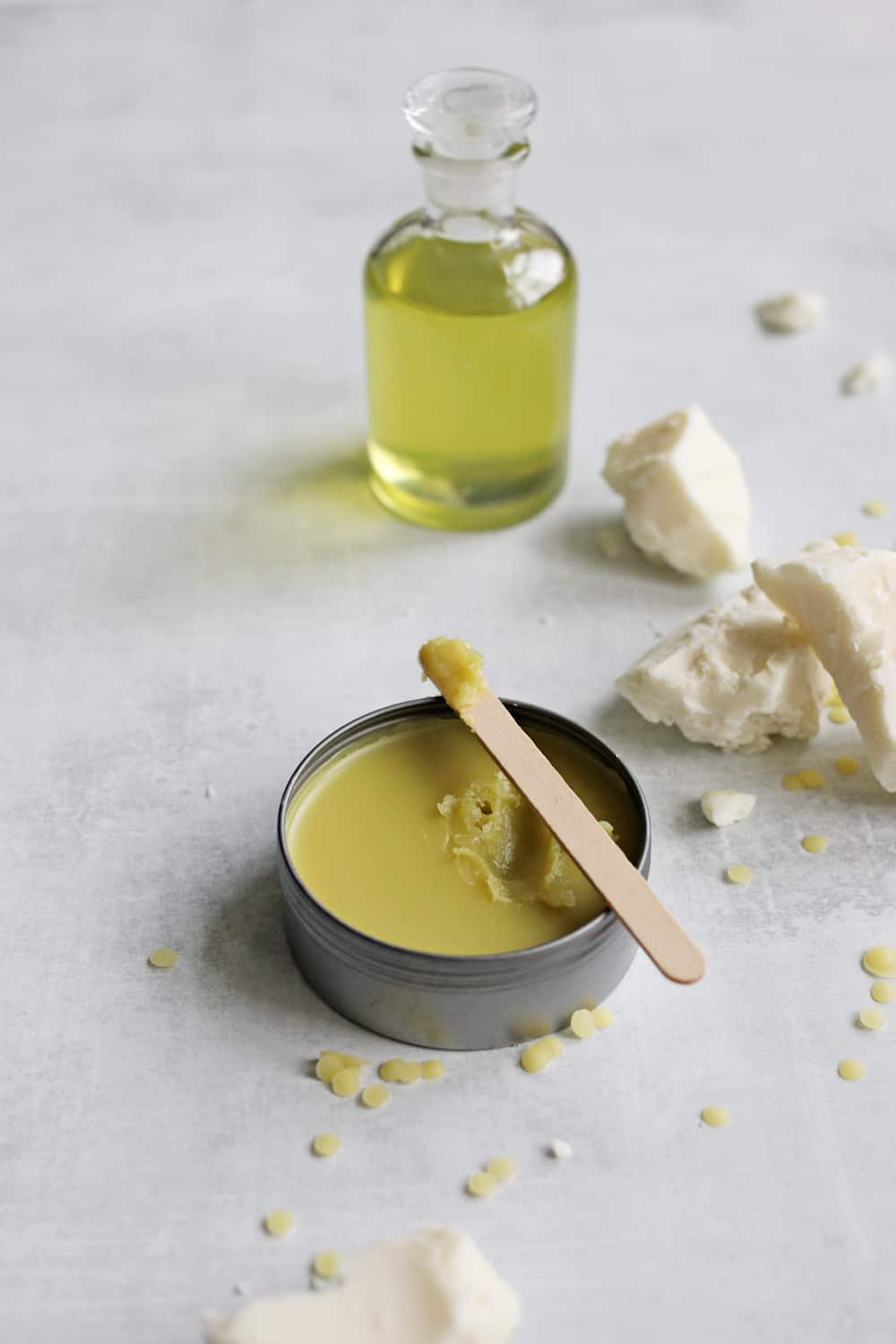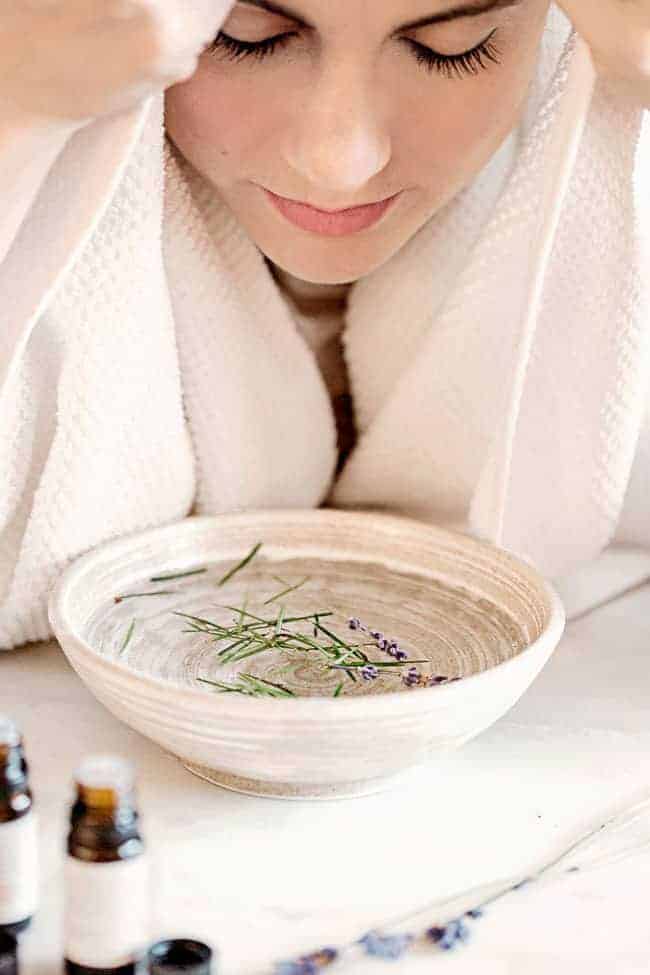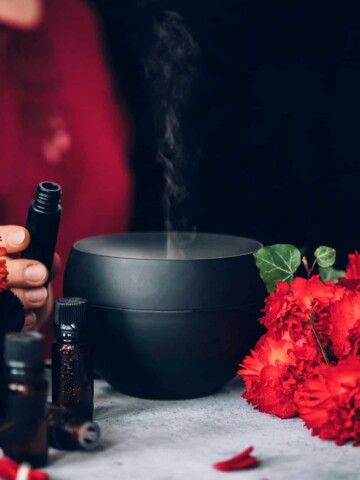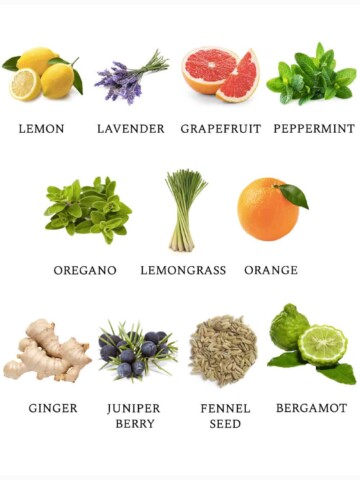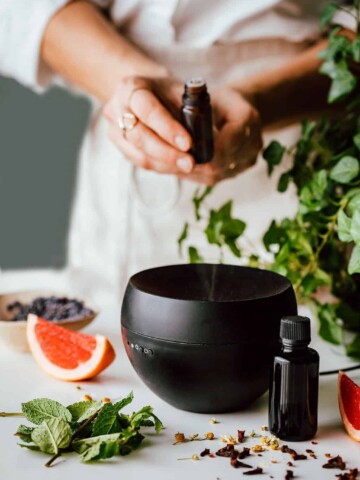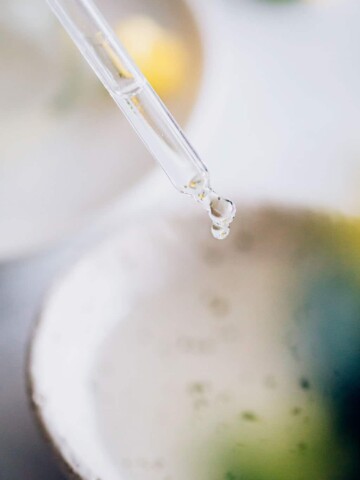By now, you've probably heard that breathing in essential oils can be beneficial for headaches, stress, and insomnia, so it's no surprise that they're helpful when the problem is ... just breathing at all. Is congestion a constant struggle from winter cold season through spring allergy season for anyone else?
A "stuffy nose" is basically inflammation (isn’t that just the root of all our problems?) in the nasal cavities or mucus membranes that blocks the flow of air. When my sinuses are clogged, not only does it make it hard to breathe, but it usually leads to headaches and pressure between the eyes.
And when the nasal passages are congested for too long, it can easily lead to a sinus infection. If you've had one, you know how fun that sinus pressure and pain can be.
Over-the-counter meds tend to make my congestion worse, so I rely on these natural remedies for stuffy noses. I especially like essential oils, which are wonderful for supporting the respiratory system.
Inhaling the oils in different forms takes the active ingredients into the nose and lungs, where they can help with congestion, coughs, and colds.
Best Essential Oils for Congestion
Stock up on these oils if you're looking to end congestion and breathe easier. Not sure how to use them? The easiest way to deliver an essential oil to your nose is, you guessed it, to breathe it in. You can do that via several methods:
Direct inhalation* - straight from the bottle, put a few drops on a handkerchief, or add 15 drops of the blend to the wick of an essential oil inhaler.
Steam inhalation - you can do a warm face steam or use the humid air in the shower
Diffuser - add 5–10 drops into your diffuser to scent rooms in the daytime or while you sleep
Topical* - rub a salve over your chest and back and breathe in the scent
*Note: direct inhalation or topical use is not recommended for infants and small children (check with their doctor before using).
Here are my favorite oils for stuffy nose relief:
1. Eucalyptus Oil (Eucalyptus globulus)
Skip the Vicks VapoRub and use cool, clearing eucalyptus essential oil instead if you're struggling with congestion. It's one of the most commonly used essential oils for mucus buildup and blocked sinuses.
It also fights inflammation and has been shown to have a role in asthma control [source]. Eucalyptus contains a compound called cineole, which in one study was found to help symptoms of sinusitis like congestion, frontal headache, and nasal secretions when taken in pill form [source].
However, the best way to use eucalyptus is to inhale it. There are lots of ways to inhale eucalyptus (including straight from the bottle), but I like these menthol shower steamers.
A warm, steamy shower already helps to loosen mucus, and adding these disks brings it to another level because they contain menthol and eucalyptus. Put one on the shower floor and breathe in deeply while you enjoy this therapy.
2. Ravintsara Oil (Cinnamomum camphora ct. 1,8 cineole)
It's easy to get confused with this essential oil! A different oil than ravensara (Ravensara aromatica), ravintsara is distilled from the leaves of the ravintsara tree in Madagascar that's rich in 1,8-cineole, the plant chemical that gives eucalyptus oils their penetrating aroma. This essential oil is known to have a strong antibacterial effect against quite a few different pathogens [source].
To add to the confusion, Cinnamomum camphora also produces ho wood (var linalool) and camphor essential oils. While the oils come from the same tree species, their chemical makeup differs based on where the tree is grown and what part of it is used.
To get the most congestion-busting cineole, go with ravintsara at the first sign of cold and flu symptoms to support the lungs, ward off bacteria, and support the immune system.
3. Peppermint Oil (Mentha piperita)
The strong menthol aroma of peppermint essential oil can also helps with feelings of congestion and stuffiness. Scientific studies have shown that peppermint has antibacterial and antioxidant properties that may help fight off the triggers for nasal congestion [source].
Humid air is your BFF when it comes to sinus relief, so use a vaporizer or diffuser with a few drops of essential oil at night while you sleep. Or try a facial steam with two drops of peppermint oil. Just remember to follow safety precautions if using with children.
4. Rosemary Oil (Rosmarinus officinalis)
It should be no surprise that rosemary is another fantastic essential oil when dealing with congestion. Rosemary has three chemical types, and the most common is rosemary ct cineole, which has a more pungent aroma and is a great addition to a homemade chest rub.
Rosemary contains anti-inflammatory properties [source], which can be beneficial when struggling with inflamed nasal passages and feelings of stuffiness.
You'll also find rosemary ct camphor and rosemary ct verbenone. I like rosemary ct verbenone, which is a softer, gentler version of rosemary essential oil. Unlike other rosemary chemotypes, it's safe for use with children.
5. Cajeput Oil (Melaleuca cajuputi)
Cajeput is in the same family of essential oils as tea tree, but it has a milder aroma. Its antibacterial properties help fight respiratory infections [source] while its menthol-scented decongestants clear blocked noses [source].
Athletes like to use cajeput when dealing with sore muscles, and a warm bath with cajeput is a great way to use it if you've got congestion and an achy body.
Simply add 2 drops of cajeput, 2 drops of peppermint, and 3 drops of frankincense with 1 tablespoon of jojoba oil and add to this simple DIY bath salt recipe.
Don't have cajeput? Substitute with tea tree or niaouli, another oil in the tea tree family that also supports the respiratory and immune systems.
6. Clove Bud Oil (Eugenia caryophyllata)
Diffusing the comforting, warming aroma of clove bud is perfect this time of year because it not only helps with feelings of congestion, but it also can help purify the air. Very important when it seems like everyone around you is sick.
This is another essential oil that contains anti-inflammatory properties [source], which can be so beneficial when dealing with sickness. It also has antibacterial properties due to an organic compound it contains called eugenol [source].
Diffuse a combination of 1 drop clove bud, 6 drops lavender, and 3 drops of clary sage to bring feelings of relief. If you don't have clove bud, try diffusing other spicy oils like cinnamon (leaf or bark) or myrrh.
7. Pine Oil (Pinus sylvestris)
Pine essential oil can do more than make your house smell clean. It can also improve the air quality in your environment by working against airborne microorganisms [source]. Rich in monoterpenes, pine acts as a decongestant as well as an antiseptic to fight lurking viruses and bacteria in the respiratory system [source].
Plus, it's a warming oil that many find to be helpful when dealing with muscle and body aches. Diffuse the oil, and let the fresh aroma permeate your home and mind.
If you don't have pine, you can substitute cypress or spruce.
Add 2 drops pine oil, 2 drops lemon oil, 2 drops lavender oil, 1 drop rosemary oil and 1 drop thyme oil to a bowl of steaming water (off the stove), cover your head and the bowl with a towel, and inhale slowly, taking deeper and deeper breaths through your nose and mouth with eyes closed. Or, simply diffuse pine with a few drops of thyme essential oil to promote respiratory health.
Congestion Essential Oil Diffuser Blends
Here are a few diffuser blends that are perfect for cold and congestion season. The first one is great for use with kiddos.
1. Spruced-Up-Nasal-Passages Blend
- 2 drop of black spruce
- 3 drops of lavender
- 3 drops of pine
- 2 drop of spearmint
2. Sweet Citrus Cold and Cough Blend
- 4 drops cajeput
- 4 drops sweet orange
- 2 drops helichrysum
3. Aromatic Breathe-Easy Blend
- 5 drops cedarwood
- 5 drops ravintsara
4. Cinnamon ‘n Spice Congestion Blend
- 3 drops ginger
- 3 drops clove bud
- 2 drops black pepper
- 1 drop cinnamon bark
5. Cheery Morning Decongestant Blend
- 5 drops pine
- 3 drops niaouli
- 2 drops peppermint
- 2 drops sweet orange
6. Clarifying Nose-Clearing Blend
- 4 drops of pine
- 3 drops of eucalyptus
- 3 drops of rosemary
Want more congestion-clearing diffusion blends? Or the best essential oils for staying healthy this cold season?
This post was medically reviewed by Dr. Holly Smith, a board certified physician in nephrology and internal medicine with a background in nutrition. Learn more about Hello Glow's medical review board here. As always, this is not personal medical advice, and we recommend that you talk with your doctor.
572

